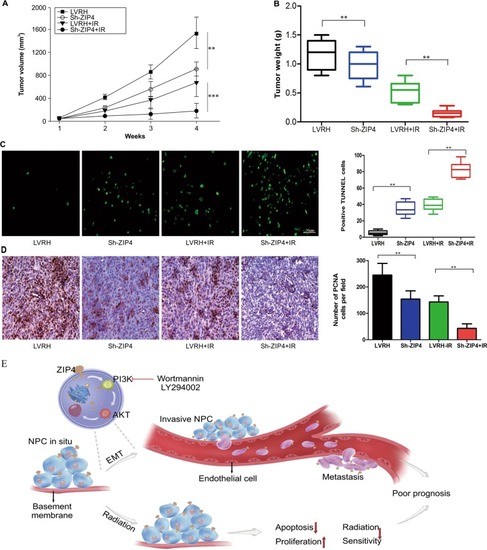|
ZIP4 silencing enhances the antitumor effect of radiation in vivo and Schematic summary of this study.a, b Sh-ZIP4 and LVRH C666-1 cells (1 × 107) were subcutaneously inoculated into the right hind limb of nude mice (N = 7 per group). When the size of the tumors reached about 50 mm3, tumors were irradiated at 5 Gy per day for 4 days (on day 1, 3, 6, and 8). Tumor size was measured and weight was recorded. c TUNEL staining of C666-1 xenografts (Scale bar = 50 μm) (P < 0.01). d PCNA IHC staining of C666-1 xenografts (P < 0.01). e Overexpression of ZIP4 induces the EMT process through the PI3K/Akt pathway and further promotes migration and invasion of NPC cells. Meanwhile, ZIP4 enhanced radiation-induced apoptosis and growth inhibition of human C666-1 cells. These findings support our clinical observations, indicating that ZIP4 elevation is associated with clinical T classification, N classification, and clinical stage, and leads to adverse survival outcomes of NPC
|

